 |
 |
 |
| |
Lean Mass Declines Consistently Over 10 Years in HIV-Infected Adults on Antiretroviral Therapy, with Patterns Differing by Sex
|
| |
| |
TDF, Integrase Inhibitors, Less Physical Activity Tied to More Lean Mass Loss
8th International Workshop on HIV and Aging, October 2-3, 2017, New York
Mark Mascolini
Use of tenofovir disoproxil fumarate (TDF) or an integrase inhibitor emerged as risk factors for greater lean mass loss in a multiyear DXA-scan study of 839 women and 1759 men with HIV infection [1]. But longer overall antiretroviral therapy predicted increasing lean mass. And in a sex-stratified analysis, the link between integrase inhibitors and lean mass loss disappeared for women. For both women and men, less physical activity, more smoking, and other factors predicted greater lean mass loss.
In the general population lean mass falls with age and is linked to falls and mortality [2]. But long-term trends and risk factors in lean mass loss among people with HIV remain poorly understood. To address these issues, collaborators in the United States, Italy, Canada, and Portugal analyzed DXA scans done every 6 to 12 months for up to 10 years in HIV-positive members of the Modena Metabolic Clinic. The researchers used the scans to determine changes in appendicular (limb) lean mass; they used mixed-effects regression models to identify clinical and demographic predictors of appendicular lean mass loss.
The analysis focused on 839 women and 1759 men with two or more DXA scans during a median follow-up of 4.6 years. Median baseline age stood at 44 years, body mass index at 22.9 kg/m(2), time since HIV diagnosis at 14 years, and CD4 count at 528. Most study participants--69% of women and 58% of men--reported no physical activity. Median smoking pack-years stood at 10 for women and 12.5 for men.
Median baseline appendicular lean mass measured 16.9 kg in women and 24.8 kg in men. Lean mass waned steadily over time, with an average drop of 231 g yearly in women and 322 g yearly in men. These drops exceed those found in the aging general population.
A model adjusted for traditional lean mass change risk factors identified 7 tied to lean mass loss in a combined analysis of women and men:
-- Female sex: -4.5 kg
-- Age 50 or older: -1.05 kg
-- Less than intense regular physical activity: >/= -419 g
-- Tobacco use: -6.7 g per pack-year
-- Viral load above 50 copies: -270 g
-- TDF use: -30 g per year
-- Integrase inhibitor use: -0.6 g per year
Five factors predicted greater appendicular lean mass:
-- Increasing body mass index: 521 g per kg/m(2)
-- Metabolic syndrome: 151 g
-- Male hypogonadism/postmenopausal status: 298 g
-- Vitamin D insufficiency: 282 g
-- Longer ART duration: 21 g per year
In a model stratified by sex, the associations between lean mass loss and integrase inhibitors and total ART duration lost statistical significance for women. But the links to TDF use and smoking persisted in women. Sex-stratified analysis identified two other predictors of lean mass loss in men: history of AIDS wasting (-535 g) and lowest-ever CD4 count below 200 (-269 g). The integrase inhibitor association persisted for men in the sex-stratified analysis.
The researchers underlined the need for further study of the links between TDF and integrase inhibitor use and lean mass loss. They had no hypothesis for the integrase inhibitor link.
References
1. Jordan Lake J, Erlandson K, Sim M, et al. Lean mass declines consistently over 10 years in J-infected adults on antiretroviral therapy, with patterns differing by sex. 8th International Workshop on HIV and Aging. October 2-3, 2017. New York. Abstract 10.
2. Beaudart C, Zaaria M, Pasleau F, Reginster JY, Bruyere O. Health outcomes of sarcopenia: a systematic review and meta-analysis. PLoS One. 2017;12(1):e0169548. http://journals.plos.org/plosone/article?id=10.1371/journal.pone.0169548
--------------------
Lean Mass Declines Consistently Over 10 Years in HIV-Infected Adults on Antiretroviral Therapy, with Patterns Differing by Sex
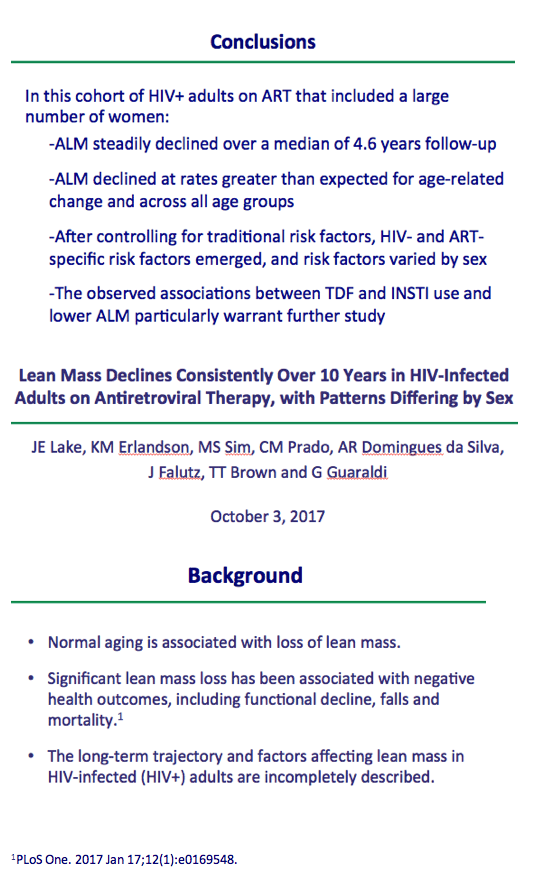
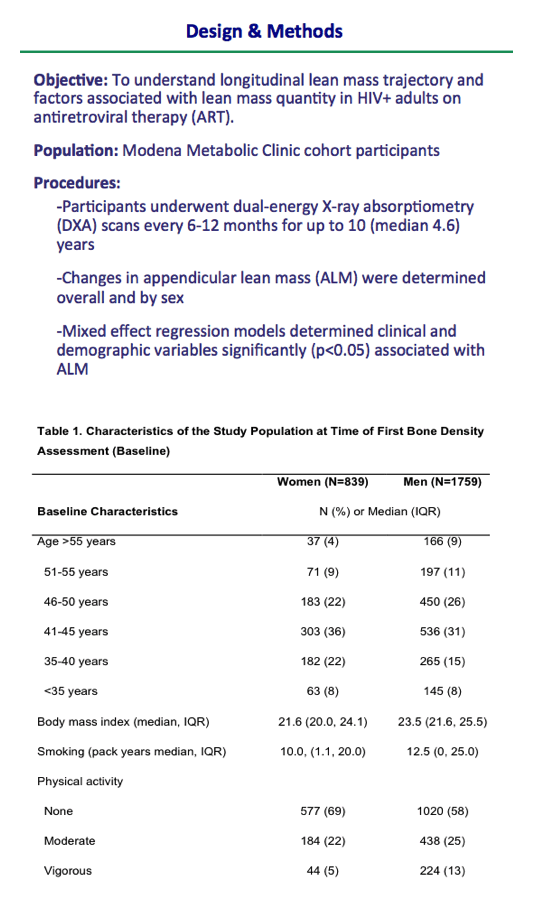
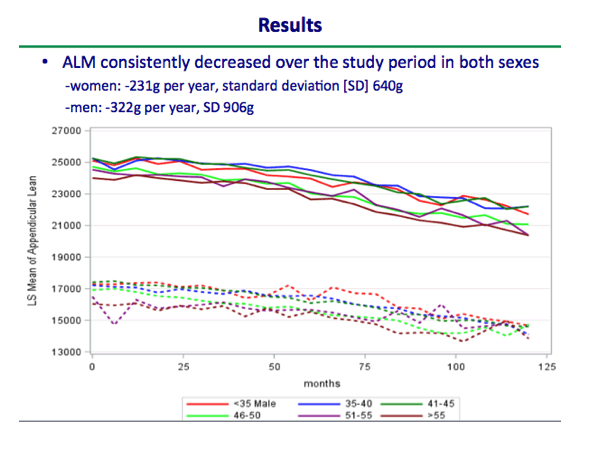
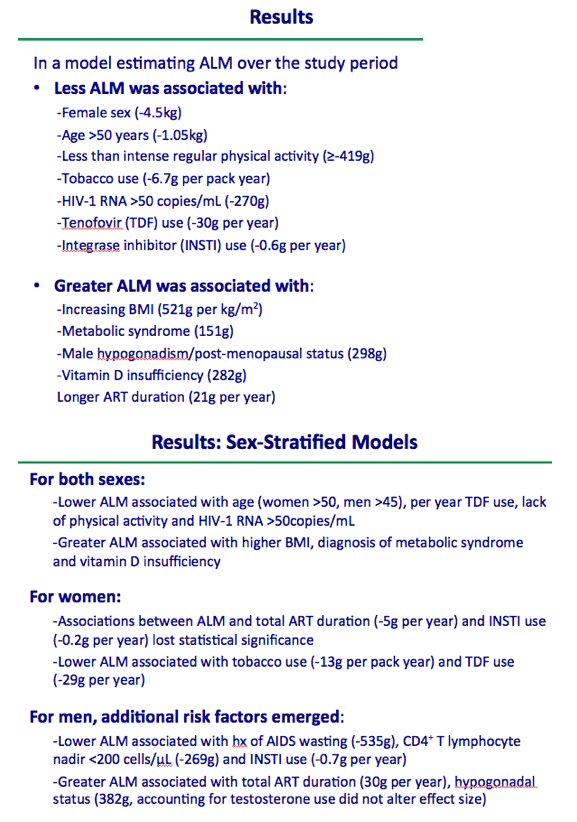
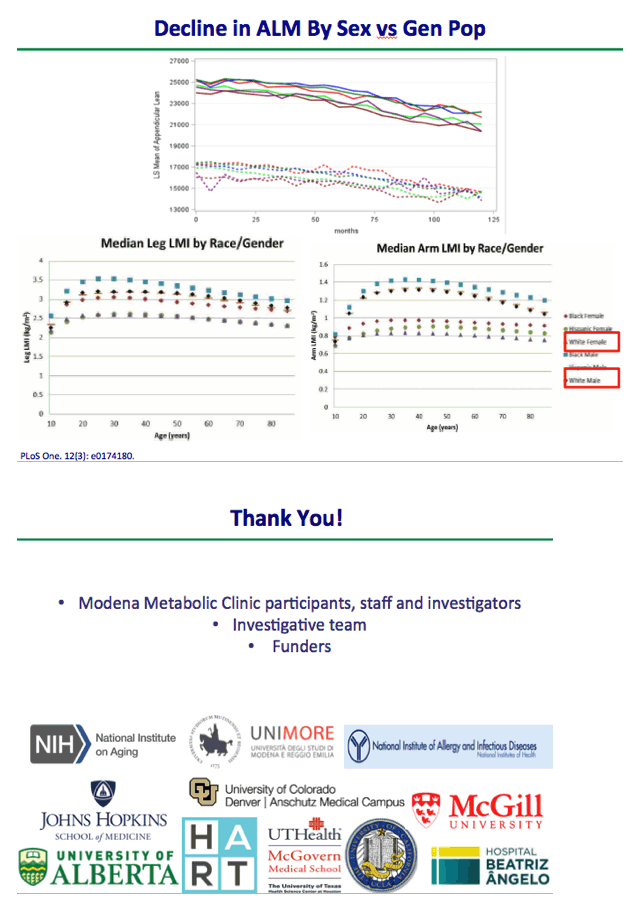
|
| |
|
 |
 |
|
|